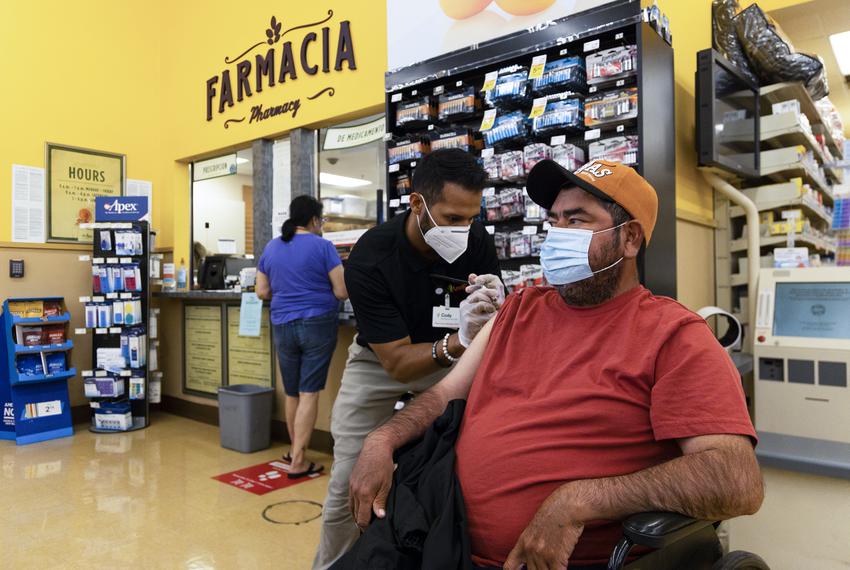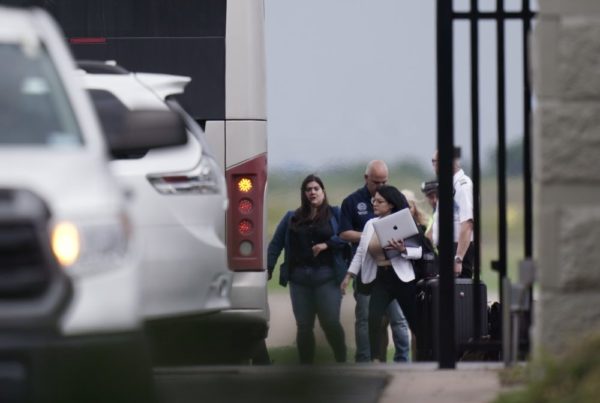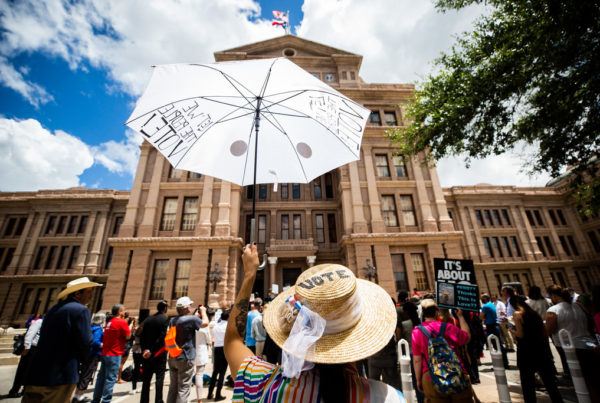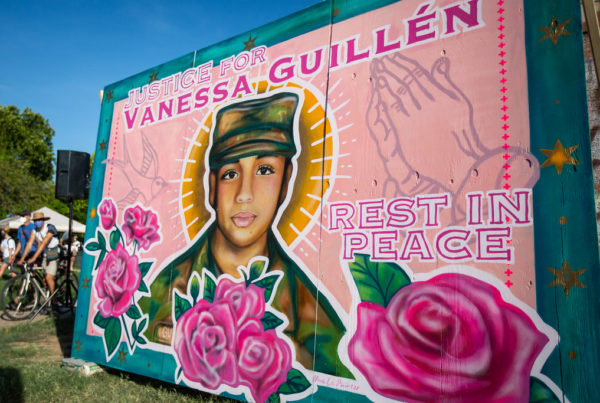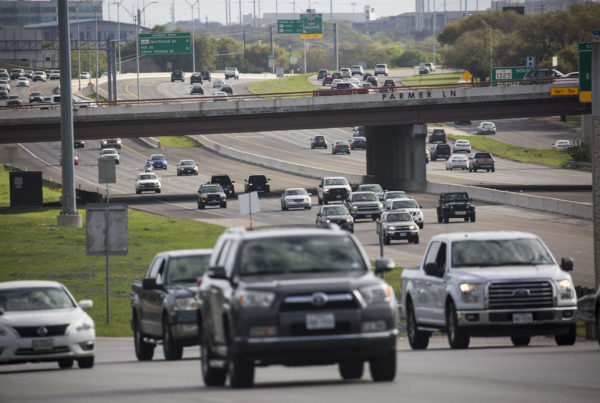From The Texas Tribune:
Amarillo retiree Vicky Richmond readily takes her preventive vaccines for flu and shingles and other illnesses people in their 60s worry about.
But she’s digging in her heels on the COVID-19 shot.
Her main reason is that she tested positive for the virus antibodies in recent weeks and believes that she has natural immunity. But she is also wary of a vaccine she believes was rushed into production — and mistrustful of the overwhelming pressure she’s feeling from the government to get it.
For those reasons and others, Richmond is steadfast in her choice not to be vaccinated against the coronavirus.
“I’m a rebel,” Richmond, 69, said with a chuckle.
She’s also a target of efforts by the health community in the Amarillo area to boost a flagging vaccination program that started off so strong that it outpaced the rest of the state in the first weeks of the vaccine rollout and earned accolades for its efficiency, access and supply.
These days, this Panhandle city of nearly 200,000 and its surrounding counties rank near the bottom of the state’s population centers in the percentage of residents who are fully vaccinated, and well below the overall state rate.
In the Amarillo metro area, which includes nearly 264,000 people in Carson, Oldham, Armstrong, Potter and Randall counties, 30% of residents are fully vaccinated, far below the statewide mark of more than 41%. Laredo is the metro area with the highest percentage of residents fully vaccinated, at 55%, while Beaumont/Port Arthur falls below Amarillo at 28%.
“It’s not for lack of trying,” said Dr. Richard Jordan, regional dean of the Texas Tech University Health Sciences Center School of Medicine in Amarillo. “But I think maybe this is a good wake-up call for Amarillo that we need to try harder and do what we can to further underscore that the fight’s not over, and that COVID is still something that is dangerous, and we have no idea what the virus variants might do to us.”
Those in the health community believe that people like Richmond are part of the reason the vaccine rate fell off a cliff after such a successful start. There just aren’t many fence-sitters in this uniquely rural-yet-metropolitan, mostly white, highly conservative area, they say.
“We have vaccine coming out of our ears that we’re trying to get people to take, but we’re having a hard time talking people into it,” said Dr. Rodney Young, regional chair of Family and Community Medicine at the health sciences center’s School of Medicine in Amarillo. “We have a good system of getting it to everybody who wants it. We just need a better system for getting people to want it.”
The phenomenon is particularly worrisome for local health officials because while there are many rural counties with lower vaccination rates than Potter and Randall, which Amarillo straddles, the city is more densely populated than surrounding counties and therefore more susceptible to another COVID-19 surge.
“The larger the group of people you have, the bigger the chance that you’ll see the disease spread,” said Kelly Northcott, deputy regional director for the Panhandle region at the Texas Department of State Health Services. “And from there, it will spread out across the region. And so I do think that Amarillo has a higher risk because people are in closer contact.”
That is especially true now that the Delta variant of the virus, which is considered more dangerous and more transmissible, is tearing through the country at a rate that doubles every week.
Amarillo’s infection and death rate have fallen dramatically since February, and the hospitalization rate for Potter and Randall counties is under 9%. Those two counties currently have 76 active cases, down from about 350 a month ago.
A Strong Start
When Amarillo resident Caroline Woodburn, 72, learned that the shot would be available at Texas Tech’s pharmacy school, she didn’t hesitate.
“I got it because I have chronic asthma, and I knew that if I got COVID it would be real dangerous,” Woodburn said. “It was very, very easy. People just came down to either the civic center or the pharmacy school, and you just got in line.”
In the first few months after COVID-19 vaccines became available, the state’s largest cities struggled with short supply, crashed appointment systems, hourslong lines and waiting lists that took days or weeks to join.
Meanwhile, rural Texas was struggling to get any vaccine at all, beset by problems with data entry, storage requirements and geographic limitations.
But Amarillo, known as a health care hub for the hundreds of square miles of rural Panhandle that surround it, sat comfortably in the middle.
The university and the city’s public health department worked early and diligently to begin getting the vaccine as soon as it was sent to Texas in mid-December. Plenty was available immediately, officials said.
Vaccinations were administered right away to older residents and health care workers through the pharmacy school and the medical school, Jordan said. And a robust walk-in operation at the Amarillo Civic Center opened before New Year’s, with free city transportation and supplies flowing in from the state at a steady rate.
Locals were also especially motivated after the area became a hot spot when the virus ripped through area meat-processing plants early in the pandemic and again when a deadly surge in November gave Amarillo some of the highest infection rates in the state, nearing 800 new cases per day, officials said.
“Those things fueled Amarillo’s surge to the front at that point in time,” Young said.
By the end of February, more than 10% of the Amarillo area had been fully vaccinated. At the time, that was double the rate of vaccinations statewide.
“Amarillo got a lot of kudos in those first few weeks of vaccinations,” Jordan said.
And then, the bottom fell out.
Sharper Drop Than The State Average
By April, about 20% of Amarillo area residents were fully vaccinated. That’s when the rest of the state began to overtake the Panhandle, in spite of a reported drop in demand for the vaccine statewide and across the nation. While data shows that Texas continued a fairly steady, if slower, climb in the percentage of residents fully vaccinated, Amarillo’s rate slowed down much more quickly.
Local health experts are at a loss to explain it. Jordan called the sharp, sudden drop in demand “a significant mystery,” given that vaccines are plentiful and the effort to reach unvaccinated people is as strong as it was in the early days — and likely to get stronger.
Officials with the mayor’s office and city public health department who oversee public health efforts declined to be interviewed or did not return repeated requests for comment.
Jordan, the regional dean of Tech’s medical school in Amarillo, said that it may also be a reflection of what he calls an “age of distrust” — in government, big pharmaceutical companies and the media — exacerbated by social media and inconsistent messaging by federal health authorities early in the pandemic.
Woodburn, who got her vaccine early, said it may be partly because so many people in the region were already infected and have antibodies. Richmond, the Amarillo resident who hasn’t gotten her shot, suggested it’s also because the recent infections, deaths and hospitalizations have dropped so low “that the fear factor is gone.”
Young, the Tech medical school’s family and community medicine regional chair, said he noticed a sharp drop in interest and trust in the vaccine after the Johnson & Johnson shot was briefly paused in the spring while scientists reviewed its safety. It was resumed shortly after with no widespread problems reported.
He and others theorize it also has a lot to do with good old-fashioned stubbornness.
“The Panhandle is fiercely independent, and if someone doesn’t want a shot, you’re not going to tell them they’re going to get it, and you’re not going to be able to talk them into it,” said Dallam County Judge Wes Richie, who has been involved in several efforts to get his constituents vaccinated.
In a recent analysis by the Washington, D.C.-based data research group Citizen Data, Amarillo was rated one of the top 10 most vaccine-resistant areas in the country, based on its demographics, vaccination rate and conservative political leanings.
“The data suggests that rural areas are a hard sell for vaccines, and particularly for the COVID vaccine,” Young said. “And the other side of that coin is that a lot of these people feel like, ‘Hey, you know what, I can live a relatively solitary life, I only go to the store on occasion, and I can wear my mask and keep my distance.’”
Once the motivated people were able to easily get their shots, there weren’t a lot of people left who were uncertain, Northcott said.
“They’ve made the decision for whatever their personal reasons are, and getting them off that stance is difficult, he said.
‘We’re Going To Keep Working At It’
But officials are determined to keep working at it, saying that it’s more important than ever to get residents in Amarillo and surrounding areas vaccinated.
Tech’s health sciences center will include COVID-19 vaccine messaging when it pushes awareness of the flu shot, as it does every year, through social media and other public awareness efforts.
The center is also planning to convert a mobile unit typically used for educational purposes into a clinic and take it into Amarillo neighborhoods that have lower vaccination rates, Jordan said.
University officials have noticed that locals seem to have more trust in younger medical students who aren’t doctors yet — one reason may be their lack of connections to big pharmaceutical companies or other perceived conflicts of interest — and so the school is looking for ways to get those students more involved in vaccinations efforts as well, Jordan said.
The city of Amarillo has also been hosting mobile clinics in libraries, churches, the courthouse, activity centers and other places where people congregate to try to reach more people, officials said.
Northcott said health officials are also pushing hard to boost vaccinations in areas outside of Amarillo by targeting truck drivers at truck stops, reaching migrant worker communities through their jobs and advocacy programs and setting up clinics “anywhere that will let us come in,” he said.
“It’s constant work,” Northcott said. “We are going to continue our efforts to get people vaccinated — one by one, two by two, ten by ten, whatever — but we are going to keep working at it.”
Richmond, an Amarillo native who describes herself as “extremely conservative,” knows that the government, the health community, and even her peers want her to get vaccinated against COVID-19. Even her husband has gotten the shot, she said.
But she’ll get it if and when she is good and ready.
“I think it’s very strange that the government is bribing people to get the vaccine, and they seem upset about it, that all these people are not getting it,” she said. “But that’s where I am, and there are a lot of people like that, and do we get judged? Yes. But I don’t care, because I have to take care of myself.”
Disclosure: Texas Tech University and Texas Tech University Health Sciences Center have been financial supporters of The Texas Tribune, a nonprofit, nonpartisan news organization that is funded in part by donations from members, foundations and corporate sponsors. Financial supporters play no role in the Tribune’s journalism. Find a complete list of them here.


